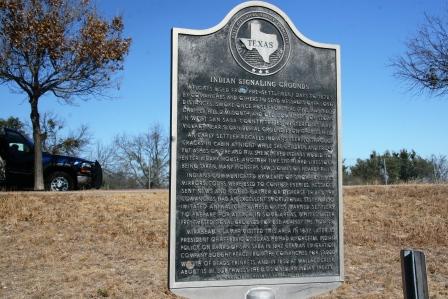Historical Markers
Alma Ward Hamrick
Barnett-Hamrick Settlement
Big Uncle Cemetery
Beveridge Bridge
Behrns Normal & Business College
Bowser Community
Camp McMillan CSA
Campbell House
Cedar Log Cabin Museum
Chappel Cemetery
China Creek Cemetery
Comanche Indian Treaty
San Saba County Courthouse
DAR Marker at Baker Cemetery
Edward S. Doss
Estep-Burleson Building
First United Methodist Church
First State Bank, Richland Springs
Harkeyville Community
Harmony Ridge Community
Harris Cemetery Marker
Indian Signaling Grounds
James Louis & Ellen Austin Baker
John Duncan's Fort
Lathum Cemetery Marker
Old Methodist Camp Meeting Grounds
Old Settlers Monument
Pickett Chappel M.E.C.
San Saba Cemetery
San Saba Church of Christ
San Saba County Marker
San Saba County Jail
San Saba Lodge #225, AF. &AM
San Saba Lodge # 612, AF & AM
Shiloh Cemetery
T. A. & Emma Sloan House
Terry Cemetery Marker
Texas Rangers and the San Saba Mob
Union Band Cemetery
United Confederate Veterans William P. Rogers Camp # 322
Veterans' Memorial of San Saba County
W.H. (Uncle Billy) Gibbons
Wedding Oak
Whitis Moore House
|
Indian Signaling Grounds |
|
5 miles East of San Saba on US 190 at picnic area |

“Heights used from pre-settlement days to 1870s by Comanches and others to send messages over long distances. Smoke once rose from here (Five Mill Hill); Chapel Hill, 2 mi. south; and old community of Sloan in west San Saba County. Tribes wintered at main village near Sloan; burial ground is on Chapel Hill. An early settler recalls Indians peering through cracks in cabin at night while she, children, and friend put ashes on fire and hid. She believed Indians would not enter a dark house. Another time she heard livestock being taken. Many pioneers saw signals on nearby hills. Indians communicated by means of smoke, at times mirrors. Codes were used to confuse enemies. Messages sent news and could gather or disperse tribes. The Comanches had an excellent smoke signal system, also imitated animal cries. These often warned settlers to prepare for attack. In some areas, whites later pre-empted signal grounds for use against the Indians. Mirabeau B. Lamar visited this area in 1837; later, as president of Republic of Texas, he had a forceful Indian policy. On banks of San Saba in 1847, German Emigration Company bought peace from the Comanches for $3,000 worth of beads, trinkets; and in 1850 on Wallace Creek, about 15 mi. southwest, the U.S. signed an Indian treaty.“